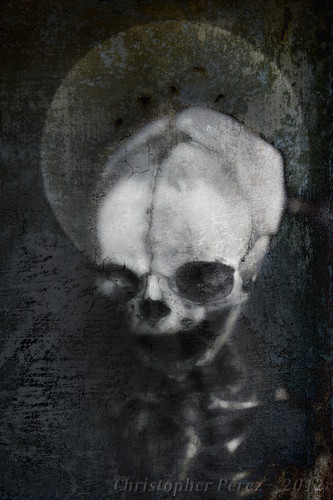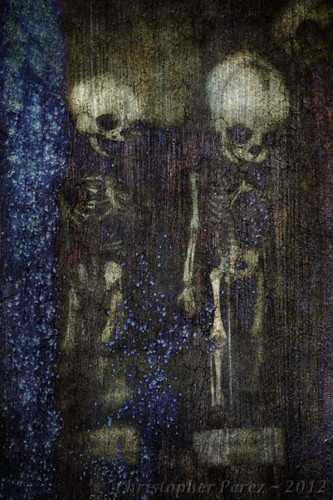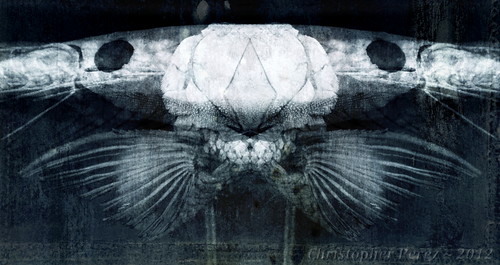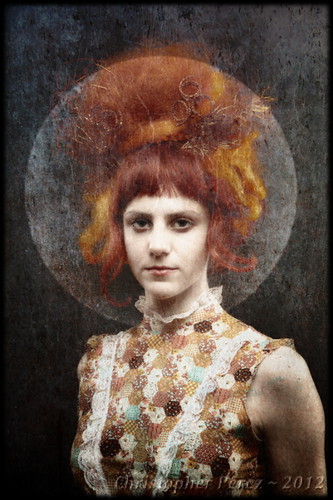I have been wondering about the direction of image making for quite some time now.

Looking back over the 160 year history of photography, the transition from hand-made chemical processes (typically with egg whites and silver nitrate) to dry plate film (thank you Great Yellow Father Kodak) brought image making to a larger population of potential artists. Dry plate film has only recently (in geologic time) been replaced by digital technologies. Here too, the transition has brought image making to a larger population of potential artists.
In fact, as I have said many times, Brooks Jensen wrote a wonderful editorial in his LensWork Magazine some time back. Therein he suggested that there may have been very few "artists" of the early egg-white/silver-nitrate age. It took a lot of knowledge and practice to string together the long series of steps that it took from "seeing" something of interest to realizing a finished image. Brooks, if memory serves, felt there were perhaps three or four outstanding "artists" from that age.

In the transition from wet-plate to dry-plate, image making allowed, perhaps, ten to fifteen outstanding "artists" to emerge in any given generation of photographers. The process of image making was somewhat shorter and more people could grasp all the steps and bend them to their creative purpose.
With the transition to digital image making, "artists" no longer have a need to understand optics, aperture settings, film sensitivities, chemical processors, shutter speeds, and the like. So much of the "thinking" about the technology of image making has been well integrated into image making devices. Again, if memory serves, Brooks posited that perhaps ten to fifteen thousand "aritsts" could emerge in this, the age of digital photography.

I enjoyed what he wrote and have used it as a guide for how to navigate the increasingly large sea of images that are being shared across the internet. From Brook's thoughts, I have fashioned my own ideas of what it means to be a photographic "artist".
I have been fortunate to have worked in a field of technology that allowed me to make money during the week and to make images for pleasure over the weekend. I have worked hard to make my images the best I can and to realize the things in image that I feel. It has been an exciting exploration.
Yet, something was evolving in the field and I couldn't quite put my finger on it. I've watched as Flickr started as a wonderful image sharing site, only to see it languish under Yahoo's ownership and to feel that Flickr has yet to reach it's potential. I've watched as Facebook, Pinterest, Tumblr, and other social sites have taken up from where Flickr failed. I've read that in 2011, ten percent of all images ever made were created in just that single year (according to Facebook's CEO).

The old ideas of what photography "meant" and what it could "do" might need to be replaced.
Just yesterday, I read an eye-opening article on Wired Magazine's site that pieced together various elements of the current state of image making in a coherent manner.
In short, we have moved from photography being a "thing", something to look at, to potentially treasure and hang a copy of on a wall. We have moved into a new age where photography has become an experience. The idea has certain merit, to my way of thinking.
The author cited the recent events surrounding the huge earthquake in Japan. The internet and social sites were flooded with images and videos that people made from their cellphones. The experience of the earthquake was well documented. However, few of these images have survived "the test of time" to remain in front of internet viewers. We experienced the event as it happened and that was pretty much that.

What has become of photographic "art"? I need to think about this and perhaps write a little at some point in the near future. In short, I feel there will be an increasingly small pool of buyers of "art" to hang on their walls or to store in their vaults. The value of "art", photography, and image making, has shifted.
Traditional ideas of what constitutes "art" may need to be reexamined.

Looking back over the 160 year history of photography, the transition from hand-made chemical processes (typically with egg whites and silver nitrate) to dry plate film (thank you Great Yellow Father Kodak) brought image making to a larger population of potential artists. Dry plate film has only recently (in geologic time) been replaced by digital technologies. Here too, the transition has brought image making to a larger population of potential artists.
In fact, as I have said many times, Brooks Jensen wrote a wonderful editorial in his LensWork Magazine some time back. Therein he suggested that there may have been very few "artists" of the early egg-white/silver-nitrate age. It took a lot of knowledge and practice to string together the long series of steps that it took from "seeing" something of interest to realizing a finished image. Brooks, if memory serves, felt there were perhaps three or four outstanding "artists" from that age.

In the transition from wet-plate to dry-plate, image making allowed, perhaps, ten to fifteen outstanding "artists" to emerge in any given generation of photographers. The process of image making was somewhat shorter and more people could grasp all the steps and bend them to their creative purpose.
With the transition to digital image making, "artists" no longer have a need to understand optics, aperture settings, film sensitivities, chemical processors, shutter speeds, and the like. So much of the "thinking" about the technology of image making has been well integrated into image making devices. Again, if memory serves, Brooks posited that perhaps ten to fifteen thousand "aritsts" could emerge in this, the age of digital photography.

I enjoyed what he wrote and have used it as a guide for how to navigate the increasingly large sea of images that are being shared across the internet. From Brook's thoughts, I have fashioned my own ideas of what it means to be a photographic "artist".
I have been fortunate to have worked in a field of technology that allowed me to make money during the week and to make images for pleasure over the weekend. I have worked hard to make my images the best I can and to realize the things in image that I feel. It has been an exciting exploration.
Yet, something was evolving in the field and I couldn't quite put my finger on it. I've watched as Flickr started as a wonderful image sharing site, only to see it languish under Yahoo's ownership and to feel that Flickr has yet to reach it's potential. I've watched as Facebook, Pinterest, Tumblr, and other social sites have taken up from where Flickr failed. I've read that in 2011, ten percent of all images ever made were created in just that single year (according to Facebook's CEO).

The old ideas of what photography "meant" and what it could "do" might need to be replaced.
Just yesterday, I read an eye-opening article on Wired Magazine's site that pieced together various elements of the current state of image making in a coherent manner.
In short, we have moved from photography being a "thing", something to look at, to potentially treasure and hang a copy of on a wall. We have moved into a new age where photography has become an experience. The idea has certain merit, to my way of thinking.
The author cited the recent events surrounding the huge earthquake in Japan. The internet and social sites were flooded with images and videos that people made from their cellphones. The experience of the earthquake was well documented. However, few of these images have survived "the test of time" to remain in front of internet viewers. We experienced the event as it happened and that was pretty much that.

What has become of photographic "art"? I need to think about this and perhaps write a little at some point in the near future. In short, I feel there will be an increasingly small pool of buyers of "art" to hang on their walls or to store in their vaults. The value of "art", photography, and image making, has shifted.
Traditional ideas of what constitutes "art" may need to be reexamined.
No comments:
Post a Comment